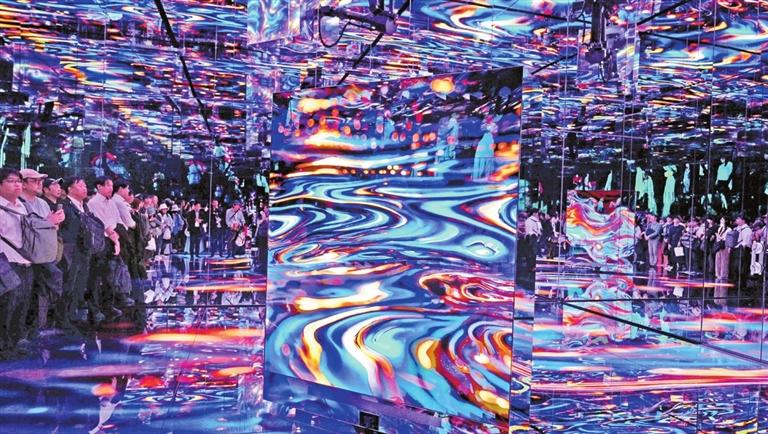
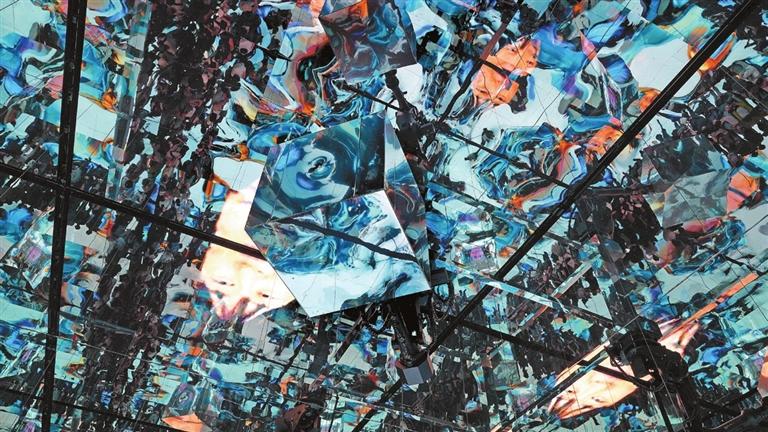
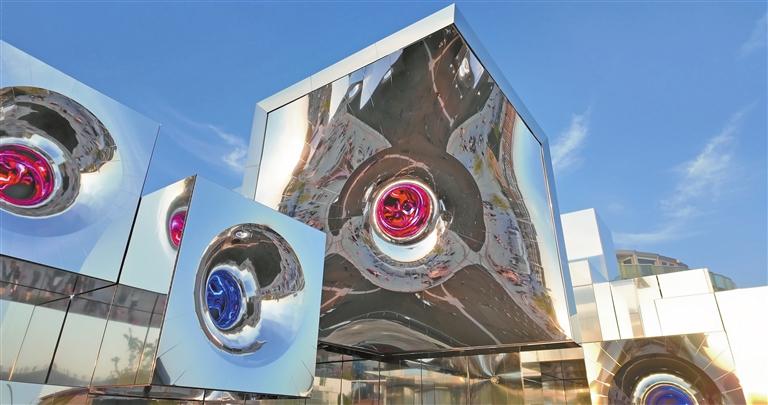
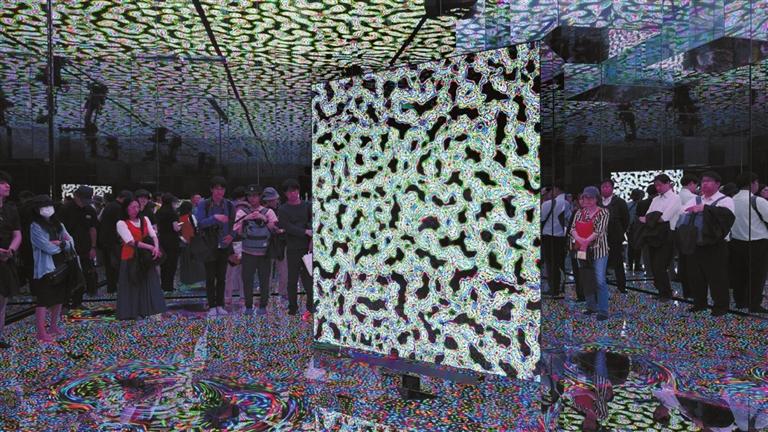
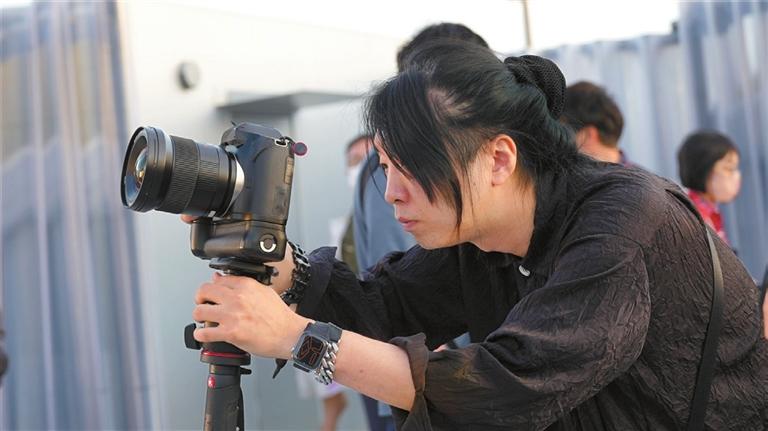
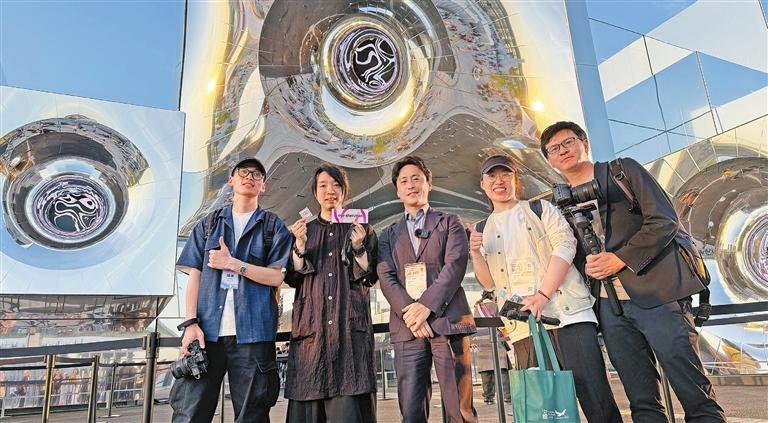
Chen Siqi vankochensq@163.com ATTENDANCE has peaked at Expo 2025 Osaka in the run-up to its closing Oct. 13, with 221,576 visitors setting a single-day record Sept. 21. Among the expo’s eight signature pavilions, Pavilion null² has captivated global audiences not only with its futuristic, sculpture-like form but also with its profound philosophical inquiry into identity, technology, and cultural heritage in an era seemingly dominated by technology and AI. During a visit to the expo, Shenzhen Daily conducted an exclusive interview with Japanese media artist and computer scientist Yoichi Ochiai, the producer of the null² pavilion. He shared the cultural, technological, and conceptual foundations of the project, along with his unique perspectives on Shenzhen. A symphony of advanced technology The null² pavilion is a feat of engineering and computational artistry. “My goal was to create the form of a sculpture on the outside. Inside the pavilion, I want it to be like Zhuangzi’s butterfly dream,” Ochiai said, referencing the ancient Chinese parable about a relative difference between the true self and others and between dreaming and wakefulness. The pavilion features vast, mirrored surfaces that vibrate, warp, and optically deform, reflecting every passer-by and the ever-changing scenery. A twisted circle in the center of the facade evokes a scene from the sci-fi movie “Dune” — an emerging wormhole capable of swallowing everything in its path. The effect is profoundly cool, futuristic, and full of cyberpunk energy. Upon entrance, the pavilion opens into a kaleidoscopic realm. Immersive, colorful visuals ripple across reflective surfaces, creating a dizzying, ever-shifting sense of self and place. Visitors who scan a QR code are able to have their faces, voices, and gestures captured and transformed into AI-generated avatars within minutes. Ochiai shared that the most challenging part was generating this AI content in near real-time. Inside the pavilion, visitors would watch a video with striking visual effects, featuring numerous figures. The movie is unique each time, as it is generated from the images and information collected from each new batch of visitors. “We made everything almost in real time,” said Ochiai. “When visitors come to the pavilion and scan the code, we collect everyone’s voice and face data on our server, and the system generates a short story in less than three minutes.” He further explained, “Within that timeframe, 3D data from 50 visitors is processed by the GPUs. That requires quite a huge amount of simultaneous computation.” Idea becomes reality According to Ochiai, the concept for the pavilion originated in December 2020, a time full of uncertainty. They were unsure if the necessary technology would even be feasible within five years. However, everything ultimately came together. The development of null² was a testament to international and interdisciplinary cooperation. Ochiai collaborated with several partners, including NOIZ architects, robotics specialists, AI researchers, and material scientists, anticipating advances in real-time graphics, voice synthesis, and semiconductor performance. “We predicted where technology would be in 2025 — high‑speed AI, improved semiconductors, more powerful GPUs — so we built for that,” Ochiai said. Key innovations include custom-built cooling systems for high-intensity LEDs, stable color-reflective panels, and a distributed computing architecture that harnesses visitors’ smartphones to offload GPU-intensive tasks. The use of Gaussian splatting and neural voice cloning allows the system to build digital figures that interact in a hybrid virtual-physical space. Not just a pavilion, but a philosophical proposal Ochiai’s work transcends art and technology. It invites visitors to reflect on how AI and digital symbiosis are reshaping human nature. “In the post-agricultural and post-industrial age, we are surrounded by artifacts, data, and algorithms. How do we return to a symbolic yet authentic experience of life? That is what we are exploring.” Ochiai shared that although we are surrounded by computational objects, our environment and even our biology are increasingly blended with technology. null² is a place to experience that transformation — not as something cold or alienating, but as a new form of life that flows from centuries of cultural imagination. He believes that the future of art lies in seamless transitions between digital and physical realms — a vision that null² embodies both poetically and technically. A dialogue between tradition and tomorrow The pavilion is also a thoughtful homage to Japan’s aesthetic and spiritual heritage. Ochiai drew deeply from elements of Japanese culture, such as the tranquility of tea ceremonies and the symbolic presence of water and rice fields in agrarian society. “We inherited a lot from Japanese culture — especially the relationship between material and symbol, between human and nature,” Ochiai explained. The pavilion’s name, “Null,” itself echoes a Japanese linguistic and philosophical concept — a word that expresses a state of emptiness, fluidity, or transformation and is reminiscent of the sound of water. It signifies both nothingness and potential, a void from which new meanings emerge. Shenzhen synergy: Where vision meets manufacturing precision A crucial part of bringing this vision to life was collaboration with Shenzhen’s technological manufacturing ecosystem. Ochiai was effusive in his praise for the city’s role, highlighting it as an indispensable partner. “Many components, especially the displays and electronic parts of the pavilion, were from Shenzhen,” Ochiai said. Having visited Shenzhen in 2019, he mentioned that Huaqiangbei left a deep impression on him. “Many semiconductor elements that emit light, or are assembled into the final products, came from there,” he explained, acknowledging that the city’s ability to rapidly prototype and produce high-quality, non-standard components was vital to overcoming the project’s most daunting technical challenges. He described Shenzhen as a “very nice city because of its young, high-speed energy,” noting its “good atmosphere” for innovation and production, which is fueled by a vibrant community of tech experts. This synergy between Japanese conceptual design and Chinese manufacturing prowess was a key factor in transforming the null² concept from a digital dream into a physical reality. What’s next? Ochiai is already looking beyond the Expo. His next ambition is to create even larger-scale “shape-shifting architectures” that can interact with the environment — a vision of buildings that breathe, adapt, and reflect human emotion and natural rhythm. “I want to make the physical world as responsive as the digital one,” he said. “We are just at the beginning.” | 
